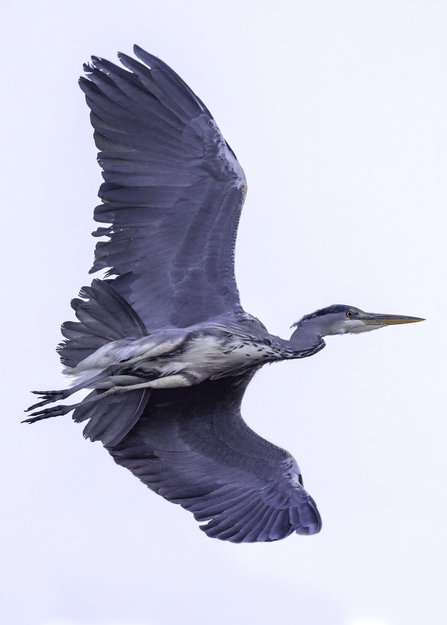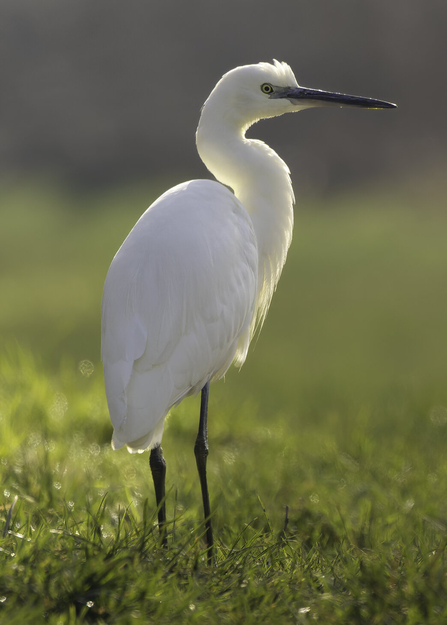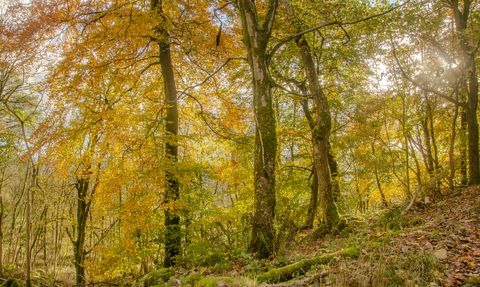
Grey heron - (C) Jon Hawkins
Grey heron
Grey herons are instantly recognisable and widespread across the UK. They look almost prehistoric, intelligent and all-knowing with their long legs and necks, grey backs, and black eyestripes. Standing stock-still, they spend most of their time alone feeding on fish or amphibians.
Their sharp yellow bills are perfect for harpooning prey. Also recognisable in flight, their slow-flapping wings are graceful, and long legs held out behind them certainly make them hard to miss!
Herons are also the earliest nesters, often laying eggs in late February and early March, and their nests – called heronries – are the only times that they come together in groups.
You can enjoy watching herons across Yorkshire, but look out for them too on our nature reserves, including Denaby Ings, Burton Riggs near Scarborough and Kirkstall Valley right in the centre of Leeds. They’ve been spotted flying slowly and majestically overhead at Skerne Wetlands near Driffield.
The grey heron is the likely species recalled when the mentioned but did you know there are other types of heron in the UK too?



